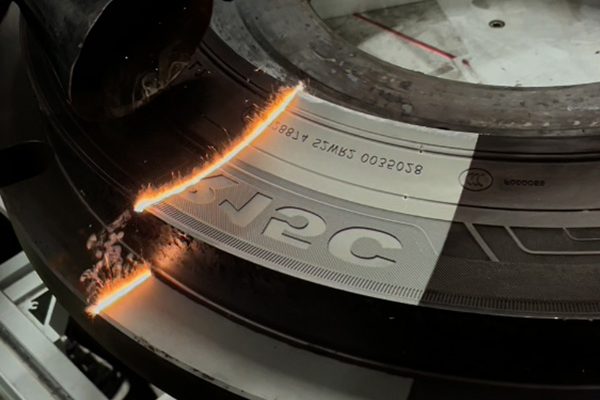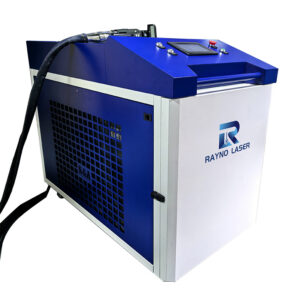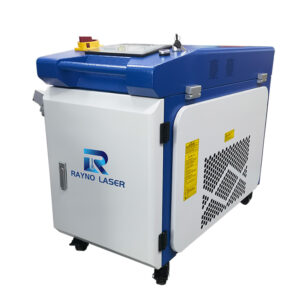Outline
- Introduction
- Brief overview of industrial surface cleaning
- Why comparing laser cleaning and sandblasting is important
- What Is Sandblasting and How Does It Work?
- What Is Laser Cleaning and How Does It Work?
- Laser Cleaning vs. Sandblasting: Key Differences
- Efficiency and precision
- Environmental impact
- Safety and maintenance
- Cost over time
- What’s the Difference Between Pulsed Laser Cleaning and Continuous Laser Cleaning?
- When to choose pulsed vs. continuous lasers
- Why Laser Cleaning Is the Future of Industrial Surface Preparation
Introduction: Why Compare Laser Cleaning and Sandblasting?
Industrial surface cleaning plays a critical role in maintenance, restoration, and production processes. Choosing the right cleaning method can significantly impact efficiency, costs, and final product quality. Two popular techniques—sandblasting and laser cleaning—are often compared. But which one truly offers the best performance for modern industries?
This article explores the working principles, applications, advantages, and drawbacks of both methods, highlighting why laser cleaning is quickly becoming the preferred choice for businesses worldwide.
What Is Sandblasting and How Does It Work?
Working Principle
Sandblasting, also known as abrasive blasting, uses compressed air to propel fine abrasive materials (like sand, glass beads, or steel grit) onto a surface at high speed. The abrasive material physically scrapes away rust, paint, scale, or dirt.
Common Applications
- Rust and corrosion removal from metal surfaces
- Cleaning concrete and stone
- Surface roughening before painting or coating
Advantages
- Fast for large, open surfaces
- Effective for heavily corroded or thick-coated materials
Disadvantages
- Generates a lot of dust and debris
- Requires protective gear and containment measures
- Can damage the substrate if not controlled
- Needs abrasive material replenishment, increasing operational cost
- Environmental concerns due to airborne particles and waste disposal
What Is Laser Cleaning and How Does It Work?
Working Principle
Laser cleaning uses a focused laser beam to remove contaminants like rust, paint, oil, or oxide layers without physical contact. The laser’s energy vaporizes or detaches unwanted materials from the substrate.
There are two types:
- Pulsed laser cleaning: Delivers energy in short bursts, minimizing heat impact.
- Continuous wave (CW) laser cleaning: Delivers a constant laser beam for high-speed, heavy-duty cleaning.
Common Applications
- Rust removal from metals
- Paint and coating removal
- Oil and grease cleaning
- Surface preparation before welding
- Cleaning delicate cultural relics and artworks
Advantages
- Non-contact and non-abrasive, preventing substrate damage
- Eco-friendly: no secondary waste, dust, or chemicals
- High precision and controllable depth
- Minimal maintenance and no consumable costs
- Safer working environment
- Smart control systems (real-time monitoring, mobile app adjustment)
Disadvantages
- Higher initial investment compared to sandblasting
- Limited effectiveness on very thick coatings without high-power lasers (but now solved by 6KW models)
Laser Cleaning vs. Sandblasting: What Are the Key Differences?
| Aspect | Sandblasting | Laser Cleaning |
|---|---|---|
| Contact Type | Physical, abrasive contact | Non-contact, laser energy |
| Substrate Damage | High risk of damaging surfaces | No damage if parameters are set properly |
| Dust/Residue | Large amounts of dust, debris | Minimal or no secondary waste |
| Environmental Impact | Generates hazardous waste | Eco-friendly, chemical-free |
| Maintenance | Frequent nozzle and abrasive replacement | Minimal maintenance needed |
| Precision | Difficult to control | Highly controllable, even for micro-cleaning |
| Safety | Requires full PPE and containment setups | Smart safety protection (interlocks, sensors) |
| Operational Cost | Lower upfront cost, high consumables | Higher upfront cost, low operational cost |
What’s the Difference Between Pulsed and Continuous Laser Cleaning?
Pulsed Laser Cleaning
- Best for precision cleaning
- Very low heat input, protecting delicate surfaces
- Ideal for cultural relics, fine electronics, aerospace components
Continuous Laser Cleaning (CW)
- Best for high-speed, heavy-duty cleaning
- Suitable for large steel structures, pipelines, train tracks, ships
- More cost-effective for mass production and industrial applications
Thus, for industries requiring fast, high-power rust or paint removal, CW 6000W laser cleaning machines are the ideal choice.
Why Laser Cleaning Is the Future of Industrial Surface Preparation
While sandblasting has long been a go-to method for surface cleaning, it cannot compete with the efficiency, precision, and eco-friendliness of modern laser cleaning technology.
Especially with the introduction of high-power 6KW CW laser cleaning machines, businesses can now achieve faster, cleaner, and safer surface preparation without worrying about substrate damage, environmental fines, or high consumable costs.
For companies aiming to upgrade their cleaning processes, investing in laser cleaning is not just a trend—it’s the future.
Ready to revolutionize your cleaning process?
Contact us today to learn more about our full range of laser cleaning solutions!





2 Responses
Chicago residents can easily get their refrigerators fixed with the help of professional repair services available in the city.Looking for the services provided by subzerorepair247.com? Look no further!
Ne’er knew this, thanks for letting me know.